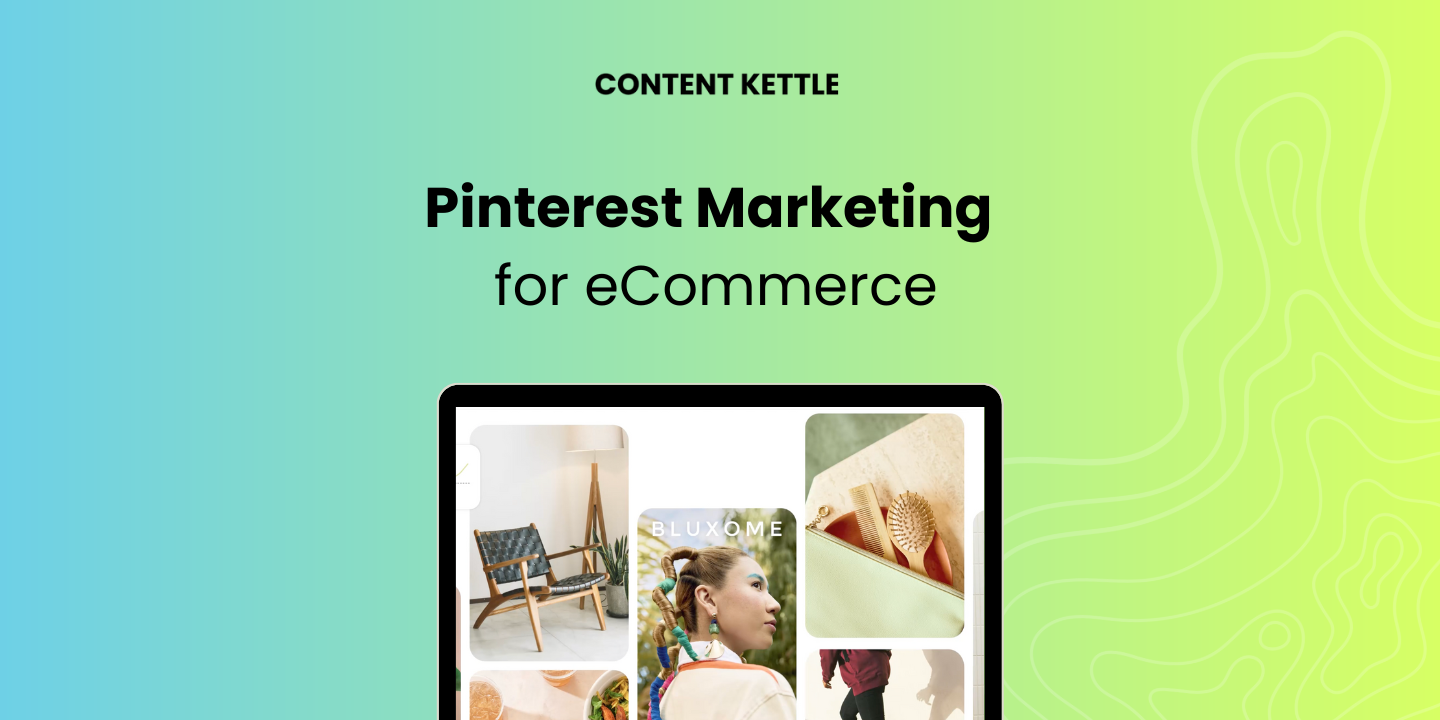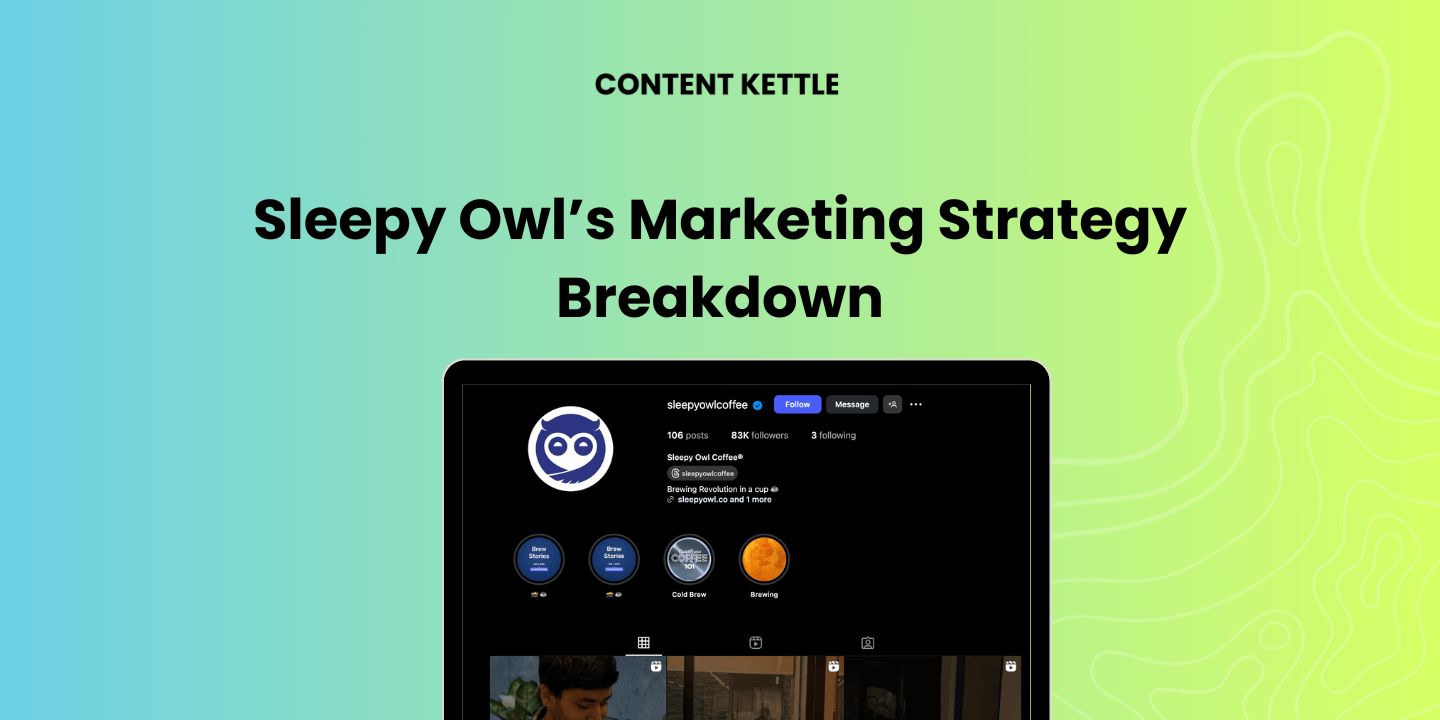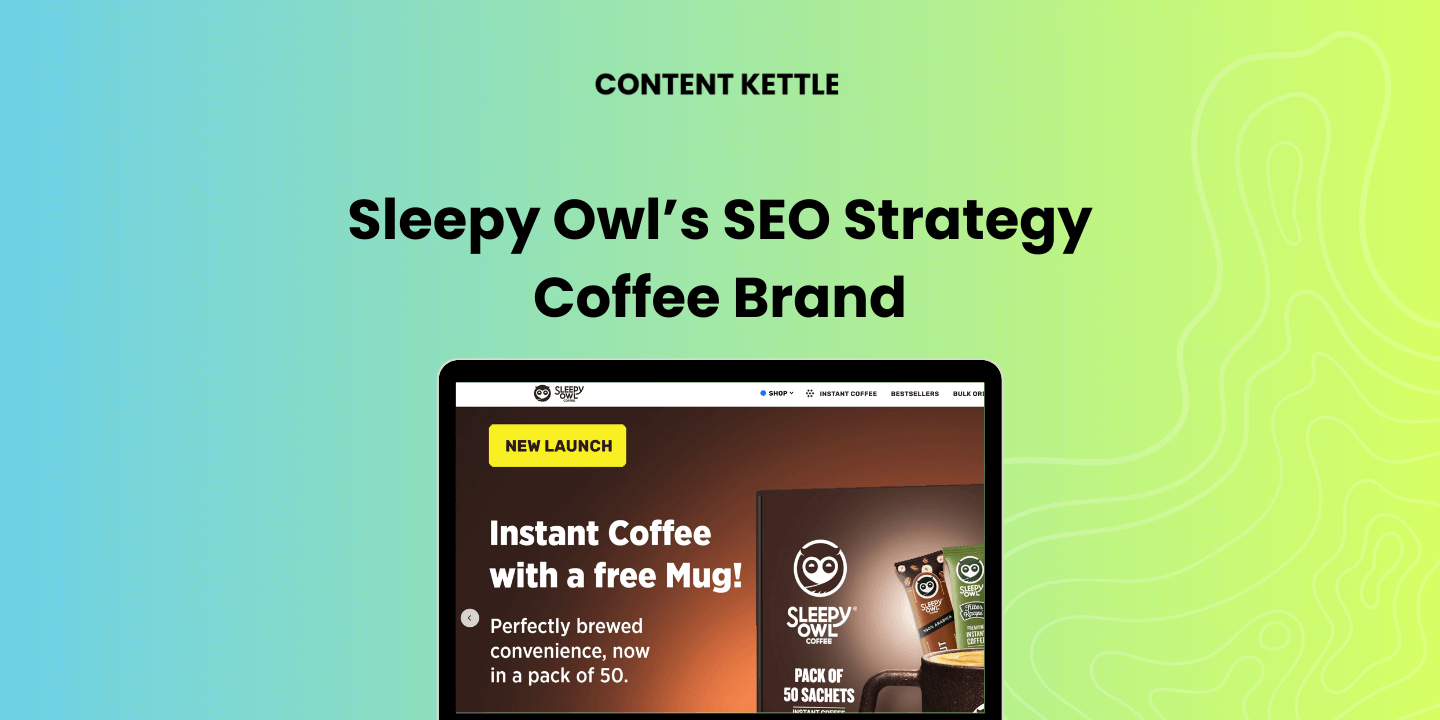Everyone is vying for a spot in the consumer mind space. However, with competition from millions of brands and a significant decline in the attention span of users, this is becoming increasingly challenging.
Gone are the days when just a good product and a well-crafted marketing strategy would get you all the attention you need. Today apart from all these, the placement of your products and brand becomes extremely crucial.
This is where Pinterest comes in.
In this guide, we’re going to tell you all about getting started with Pinterest marketing for eCommerce.
What is Pinterest marketing for eCommerce?
Simply put, Pinterest marketing for eCommerce is leveraging Pinterest as a platform to build your online presence by strategically using one of the most popular visual platforms.
Pinterest is extremely simple to use and understand. You can explore, share and store visual content you find relevant.
As a brand, you can upload creatives, short videos, infographics, product shots and a lot more to inspire the users to buy from you. One of the major advantages of Pinterest is the feature of adding links to your content. This allows the brands to divert traffic to their store and kickstart the buying journey for the users.
With 518 million active monthly users, Pinterest also offers a great opportunity to nurture a community on the platform. Pinterest marketing for eCommerce can help you enhance brand visibility, increase engagement and generate leads. If utilized strategically, Pinterest marketing could be the game changer for your brand.

Why Pinterest marketing for eCommerce?
There are several benefits of using Pinterest for eCommerce marketing:
1. Visuals, Visuals, Visuals – Search, See and Buy
A brand is all about visuals and Pinterest is the best platform to leverage that. Users engage with the content and save it if they find it inspiring and relevant.
A lot of their buying decisions are based on what consumers see on the platform. More than 85% of weekly users have made a purchase from Pinterest pins. Craft engaging content to inspire your audience and let the platform do its magic. Pinterest is all you need to get your users from exploration to purchase.
2. Rank Well, Do Even Better – Ace SEO Through Pinterest
Pinterest is an underrated platform for SEO. However, with a great strategy and appealing content, this platform can do wonders. While bigger brands have captured the mainstream platforms, Pinterest offers an exception.
More than 96% of searches on the platform are unbranded and this allows SEO to take over. Every pin on the platform can be optimized using relevant keywords and content to attract users to your brand. It provides everyone a level-playing field for every brand making it an ideal space for the smaller ones.
3. Increased Website Traffic, More Purchases
Pinterest allows you to add a link to each pin on the platform which increases the traffic to your store. It acts as a discovery tool for the consumers and makes them a part of a consumer journey and a funnel that leads them to your website.
Multiple brands use Pinterest marketing shopify to increase traffic on their store and eventually more purchases.
4. Luxury Calling – Close High-ticket Consumers Through Pinterest
If you’re looking for high-ticket consumers, then Pinterest is the way to go. 3 in 5 luxury shoppers use Pinterest to look for luxury brands and products. Along with that, 1 out of 3 luxury shoppers have an income of over $100,000. So, if you’re a premium brand looking to build your online presence, you must work on your Pinterest game.
5. One for All, All for One – Better Targeting with Wide Audience Presence
For a brand to scale, it needs to target the right audiences through its ads and promotions. Pinterest has a wide variety of audiences along with the most-in-demand, Gen Z.
More than 42% of their total global user base are gen Z and they are growing rapidly. Along with that, the platform has a huge audience of millennials and other age groups too. Both females and males are there on the platform for brands to pitch their products to. With Pinterest’s smart advertising features, you can target these users based on demographics, gender, interests and much more.
6. Community You Can Be Proud Of – Pinterest for Brand Awareness & Loyalty
With a loyal user base, Pinterest is becoming a great option for top brands. As the audience on the platform is highly refined, it allows brands to specifically strategize their marketing for the people on the platform.
Top brands such as IKEA, IT Cosmetics and Micheals etc. are utilizing the platform and have a huge community that vouches for them. Community can only be built if everyone in that group aligns with the brand’s approach and their vision. Content that resonates with your audience is the best way to nurture a community on Pinterest and this platform has everything to help you do that.
It doesn’t end here.
There is a lot more that can be done with Pinterest marketing for eCommerce. Here are all the mind-blowing numbers that you might need to know about Pinterest Marketing to build your brand on this platform.
However, you can reap the benefits of Pinterest only when you have a comprehensive marketing strategy in place.
How to get started with Pinterest marketing for eCommerce?
Let’s take a step by step approach to creating a Pinterest marketing strategy for your eCommerce business:
1. Be Specific About What You Want to Achieve
It’s impossible to craft a great strategy without defining clear goals. So, based on what your brand requires, set objectives for the platform based on that. It could be increasing website traffic, increasing followers on the platform, boosting sales or improving brand awareness.
Once you know your goal, everything must be planned around it. This will help you streamline your thoughts and efforts towards one thing.
2. Know Who Would Want to Hear from You
Once you set your goals, the next step is to identify your target audience. You can’t pitch your products, brand or your vision to everyone. You must know who might be interested in buying from you or engaging with your content.
Conduct research to identify your target audience on Pinterest. This should include an understanding of their demographics, interests, and behaviors to tailor your content effectively.
3. Optimize your Pinterest profile
Remember, your Pinterest profile isn’t just another brand page – the platform also serves as a search engine for most.
Create a business account on Pinterest and optimize your profile with a compelling bio, relevant keywords, and a high-quality profile picture that reflects your brand.

4. Optimize your Pinterest boards
We also recommend optimizing your Pinterest boards to keep your content streamlined. This means ensuring that you name the Pinterest boards clearly, give relevant titles to Pins and add descriptions with keywords that match the content.
Other SEO practices such as optimizing your page for visual search, using recommended sizes for images and videos, using ALT text for images and having backlinks etc, would make your profile great.

5. Connect with Your Community
To build your brand on Pinterest, you must nurture your community. You need to engage with the audience. This can be done by replying to their comments on pins, sharing content that they resonate with and actively responding to their messages.
This allows the users to connect with the brand on a deeper level and they start believing in the brand’s vision. It leads to strong brand loyalty and improved brand reputation.
6. Use Pinterest Ads to Reach Your Audience
Users are on Pinterest to find ideas and if your brand is relevant to what they are looking for, you become their go-to profile. However, you need to be at the forefront to be discovered and that’s where Pinterest Ads come into the picture.
The platform’s robust advertising features, if used well, can get you discovered by your target audience in no time. So, if you’re starting out on the platform, it’s essential to use ads.
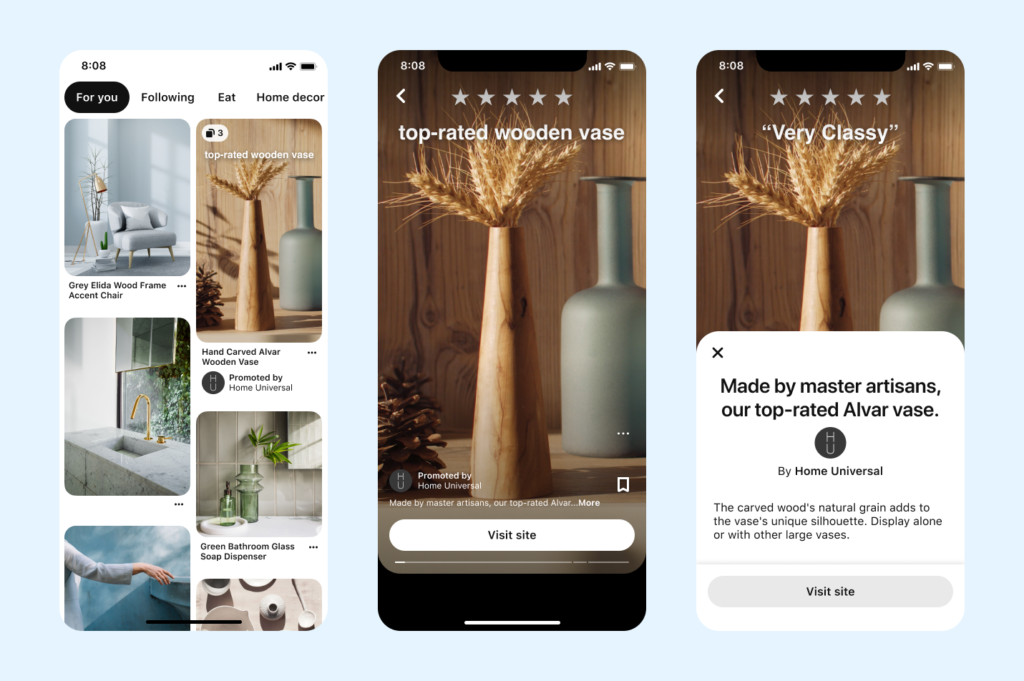
7. Measure, Analyze and Pivot
There is no one fit-for-all strategy for Pinterest. Each brand has its own goals and you need to strategize based on that. To do that, you must know what’s working and what’s not and Pinterest Analytics helps you do that effectively.
You can track your brand’s performance on the platform through various metrics such as engagements, profile visits, follows, playtime etc. and a lot more. You can change or modify your brand’s Pinterest strategy for eCommerce based on the analysis.
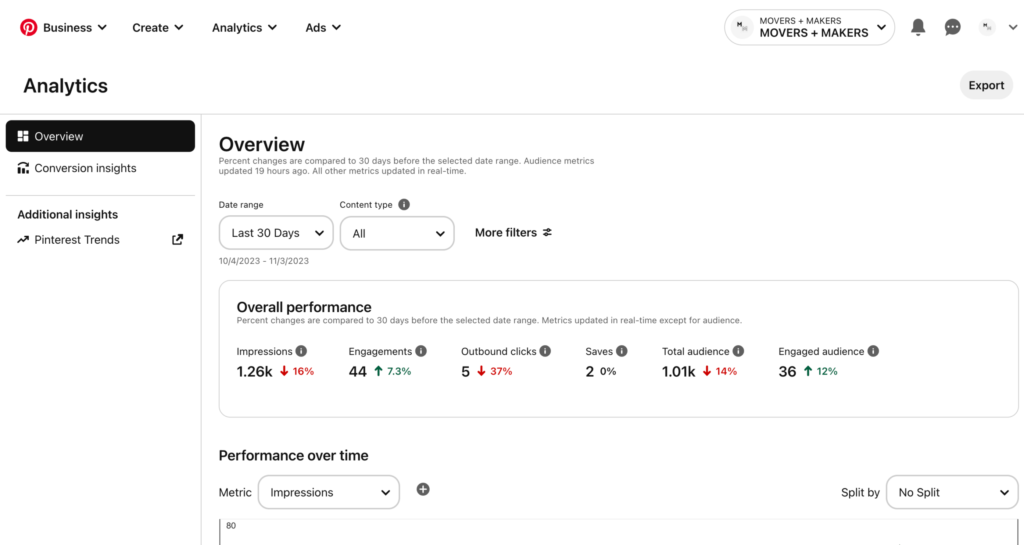
Examples of Pinterest marketing for eCommerce
Here are some leading brands using Pinterest for marketing:
1. IKEA
One of the biggest brands for furniture and houseware, IKEA’s Pinterest game is on point. There are numerous products for users to choose from and it could be an overwhelming experience to shop from the collection.
IKEA makes it easier for their consumers through a quiz that understands the requirements and then shows relevant pins related to the product that they might be interested in. This brand used Pinterest to suggest and motivate users to get the perfect product without getting confused with a lot of offerings.

2. Sephora
Sephora is the go-to place for beauty enthusiasts and the brand’s bio creatively incorporates that emotion. The brand shares high-quality visuals as is required in the beauty industry. Apart from that, Spehora’s Pinterest is very well organized.
The brand categorizes its content into different boards based on themes such as seasonal trends, beauty tips, skincare, makeup and UGC content. This makes their content easily accessible to their users. Sephora also shares a lot of educational content such as makeup tutorials, beauty hacks and skincare routines.
This provides the users everything they need on beauty making the brand a go-to for them for all things beauty and skincare. On top of all this, Sephora ensures they are on top of the latest trends.

3. Etsy
Etsy is a well-known platform that sells vintage and handmade items and craft supplies. Its Pinterest strategy revolves around visual storytelling, varied content themes, user-generated content, collaborations and more.
Its Pinterest boards are categorized into various themes such as Home Decor, DIY, Jewellery and much more. This helps users to find the content of their interest easily. Along with that, Etsy leverages UGC content to build trust and credibility among its audience. With over 10 M followers, their Pinterest strategy is certainly working and could be great to take inspiration from.

Apart from these brands, there are a plethora more who are doing really well with their Pinterest eCommerce strategy.
You could have a look at Wayfair, Modcloth and Crate and Barrel for cues on Pinterest marketing for eCommerce.
While all of the aforementioned tips and learnings can help you get started, you need expertise to crack the Pinterest game.
This is where we come in.
Our team of social media marketers has helped multiple brands build their Pinterest presence with precise strategies and long-term planning.
Pinterest has immense potential and you can transform your brand through this platform with the right Pinterest eCommerce strategy.
If you wish to go beyond just random pins and leverage Pinterest to its fullest, contact us here.
